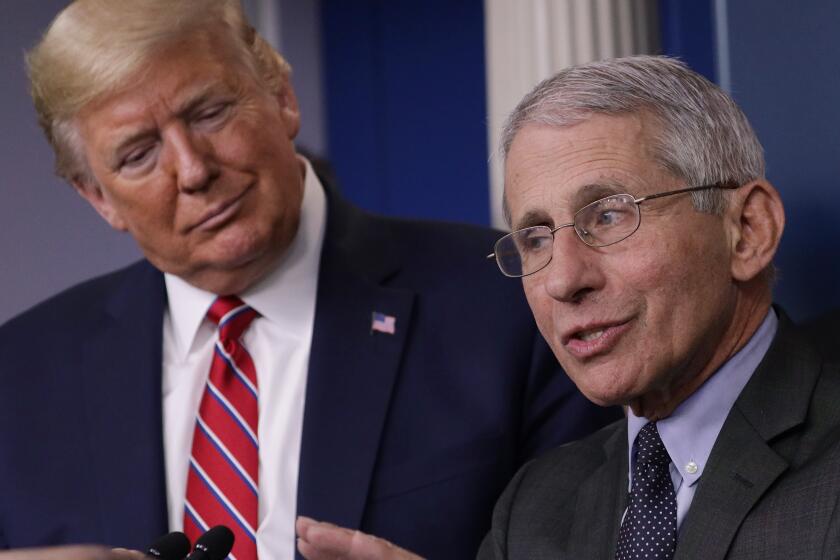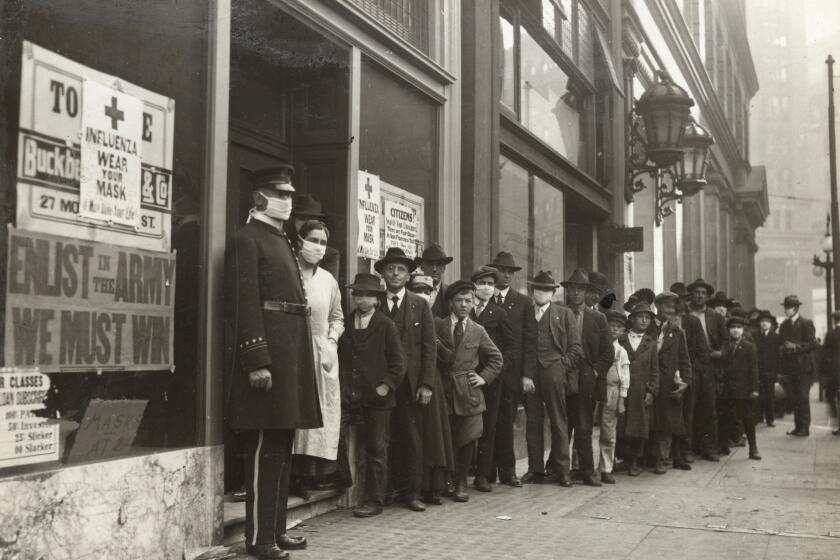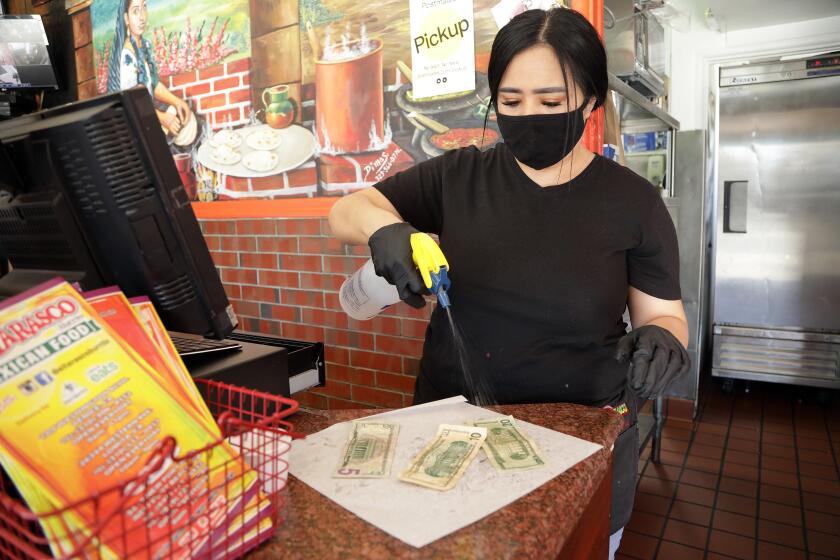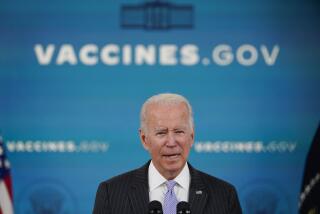Reopening the economy vs. keeping it shut longer. What’s more costly?
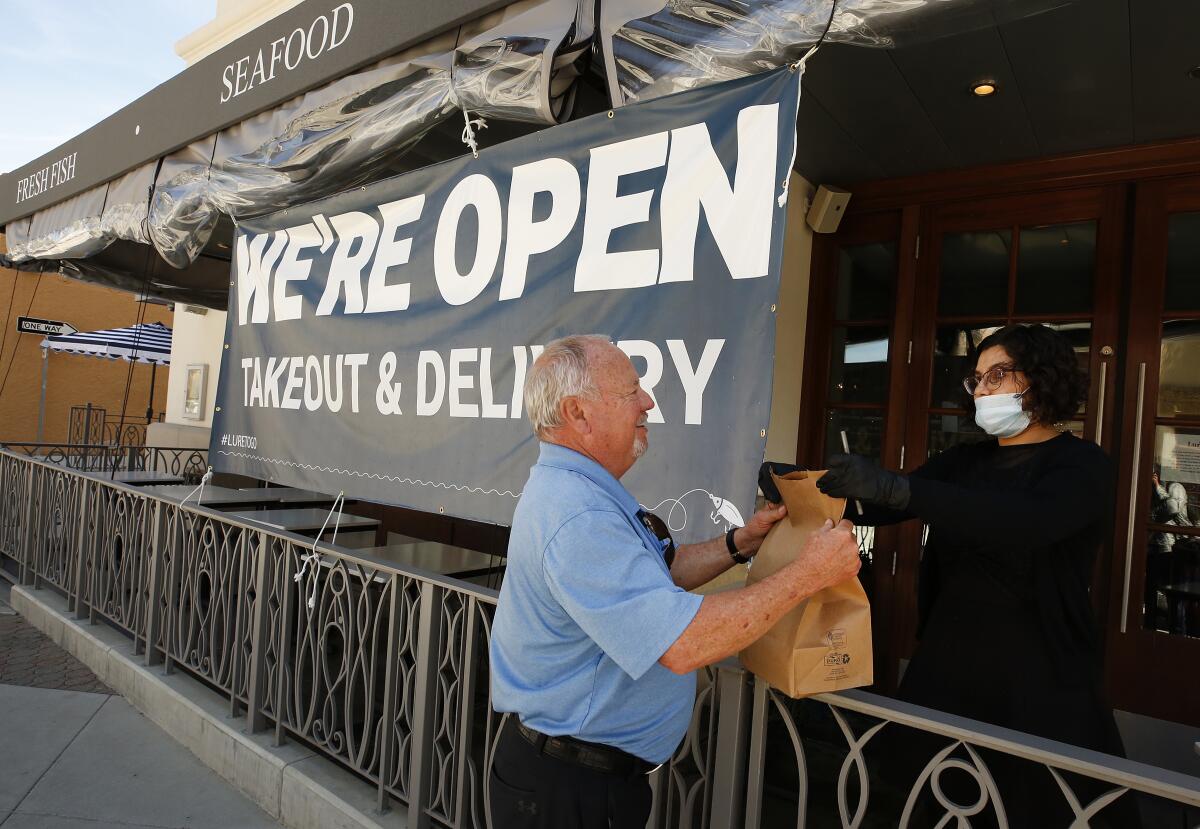
- Share via
WASHINGTON — When the governor of Georgia and other leaders press for ending government restrictions aimed at containing the coronavirus, they are proposing a huge gamble, not just for people in their own states but for millions of others nationwide.
And with the coronavirus still spreading, the risks are not just medical. They include the likelihood of expanding and lengthening the already catastrophic economic damage.
That is the widespread view of the nation’s leading experts on epidemics, as well as most mainstream economists.
What makes the risks so great, these experts say, is the way the coronavirus spreads, especially in today’s interconnected economy.
“The health risk is not just to the individual who is out and about. It’s to everyone else in that community,” said Katherine Baicker, a health economics policy expert at the University of Chicago. “And given travel patterns and movement around the globe, the community is very big.”
Studies suggest that coronavirus infections were spreading in the United States farther, faster and earlier than initially thought.
The head of the Centers for Disease Control and Prevention, Dr. Robert Redfield, has warned that a new wave of COVID-19 infections could coincide with the flu season later this year and make the problem even more challenging to combat.
Much of the pressure to relax social distancing measures can be traced to President Trump and to small groups that support his reelection.
Weeks ago, Trump advanced the argument that the cure is worse than the disease. In recent days, a number of conservative politicians and economists have weighed in with variations of that argument.
Rep. Trey Hollingsworth (R-Ind.) has said that deaths due to the coronavirus were “the lesser of two evils” when comparing the harm to economic and American life.
Supply-side economist Arthur Laffer, an advisor to Trump, contended it was “absolutely immoral” to suppress the economy and deprive future generations of opportunities.
“We are crushing the economy,” said Texas Lt. Gov. Dan Patrick. “There are more important things than living.”
Beyond these arguments, a lively debate has sprung up among economists over whether the pandemic can be treated as a cost-benefit problem. In business, executives and accountants perform such exercises all the time.
In the case of the coronavirus, creating such an equation is complicated by the large number of unknowns, including how many people will be infected and how many will be seriously sickened or killed, and then estimating the long-term financial consequences.
“There is clearly a difficult trade-off here concerning lives versus material goods, with very little discussion about how this trade-off should be assessed and acted upon,” said Harvard economist Robert Barro and coauthors Joanna Weng and José Ursúa in a recent paper on the coronavirus and the 1918 flu pandemic.
That pandemic, which claimed an estimated 550,000 to 675,000 lives in the United States, is widely considered the closest parallel to the coronavirus outbreak in modern times.
The economic value of a human life, measured statistically on the basis of expected income and other factors, might be in the range of $3 million to $10 million in the U.S., Barro said in an email to The Times.
California lessons from the 1918 pandemic: San Francisco dithered; Los Angeles acted and saved lives
San Francisco went mask crazy. Los Angeles shut down early and stayed closed longer, but not long enough. Some lessons from the 1918 Spanish flu.
To determine the cost benefit, that amount would be weighed against the predicted number of lives saved and the economic cost of continuing to curtail large-scale social interactions and the resulting financial losses.
But setting aside any ethical or moral qualms over such an approach, studies of the fallout of the Spanish flu indicate it’s not necessarily an either-or issue: A middle-ground strategy may yield better outcomes on both the health and financial sides.
Barro said government interventions such as social distancing and quarantines to fight the flu pandemic a century ago lowered peak death rates.
The lowering of death rates did not prove permanent, he said, as the containment policies were generally relaxed after about four weeks. Barro worries that we could be heading down a similar path.
“We may be in a situation now with a temptation to ease too fast,” he said.
In another recent paper, economists at the Federal Reserve and MIT examined economic and mortality data for 30 states and several dozen cities that had varying practices of intervening during the 1918 flu.
Their conclusion: Cities that intervened earlier and more aggressively benefited in both limiting deaths and showing faster long-term economic growth after the pandemic passed.
“Our findings thus indicate that [nonpharmaceutical interventions] not only lower mortality; they may also mitigate the adverse economic consequences of a pandemic,” the authors wrote.
Trump himself has shunned such complicated analytical approaches to the question of quick reopening. Even as he disagreed with Georgia’s aggressive reopening plan, Trump has encouraged states to resume normal life, insisting that people are overreacting to the scale of COVID-19 deaths in relation to other causes of death, and that the slumping economy carries its own death toll in terms of suicides and illness.
He has pointed to the thousands of deaths by automobile crashes, noting “that doesn’t mean we’re going to tell everybody no more driving of cars.”
Beyond the numbers — COVID-19 deaths in the U.S. already have surpassed the estimated 38,800 car crash deaths last year — economists see that line of thinking as a false analogy.
“Yes, we live with those risks” from motor vehicles, said Harry Holzer, a public policy professor at Georgetown University. “But with COVID, no one thinks this is going to go on forever, so we’re talking about on the margins, do we wait another month or two versus do we not wait? The cost in deaths if we didn’t wait for that very short amount of time, the spike in deaths, could be really high.”
Baicker, the Chicago health economist, sees the auto crash analogy as an argument for more testing and other research on the coronavirus. She noted that the government has imposed speed limits as well as seat belt use and safety inspection rules for cars.
“If we have better tools available to us to do population testing, contact tracing, if we had more healthcare system capacity, we would have even better choices available to us in terms of further easing economic restrictions, letting people resume normal activities without risking excess mortality,” she said.
“We have to care about both health and economic well-being. But we can be developing policy options to let us have more of both,” Baicker said. For example, she added, data could be used to start reopening certain businesses that have the lowest transmission risk.
Many experts also point out that the trade-off debate ignores the inequitable distribution of those costs and benefits.
For one thing, the pandemic has exposed holes in the nation’s social safety net and has had more dire health and financial consequences for those with fewer economic and political resources.
A higher share of black and Latino people have suffered COVID-19 sickness and deaths, and they and others who stand lower on the economic ladder are likely to suffer disproportionately if an early reopening causes a resurgence of infections and fatalities.
That includes the great majority of American workers who cannot effectively do their jobs from home.
Los Angeles Times’ visual coverage of the coronavirus crisis
The political and economic leaders who are making comments that reopening the economy is worth the risk are generally better off, stand to benefit more from a return to business and are less vulnerable to the downside risks, Georgetown’s Holzer said.
Richard Trumka, president of the AFL-CIO, sounded almost offended by the proposition that the costs of staying closed may outweigh the benefits of maintaining public restrictions to contain the virus.
“Implicit in that is there is a certain number of people that we are willing to sacrifice. Or they can die in order for the economy to open for the rest of us,” he said in a conference call with reporters this week.
“I reject that premise. I’m not willing to sacrifice workers’ lives for a premature reopening. And I think anybody who does that is actually being on the selfish side,” he said.
Robert Tusquellas, 78, owner of Bob’s Coffee and Doughnuts in Los Angeles’ Original Farmers Market, said: “It’s a very, very difficult decision to make. Even though I’m a businessman and have been all my life, I wouldn’t want to make that decision.”
As a practical matter, even if the restrictions were lifted right away, he said he doesn’t see customers flocking back to restaurants, airplanes, ballgames and the like anytime soon.
“My business might come back quicker than the cruise ships, but it would be maybe bad for everybody healthwise,” Tusquellas added. “I’m looking at it bigger than just me.”
More to Read
Get the L.A. Times Politics newsletter
Deeply reported insights into legislation, politics and policy from Sacramento, Washington and beyond. In your inbox three times per week.
You may occasionally receive promotional content from the Los Angeles Times.
